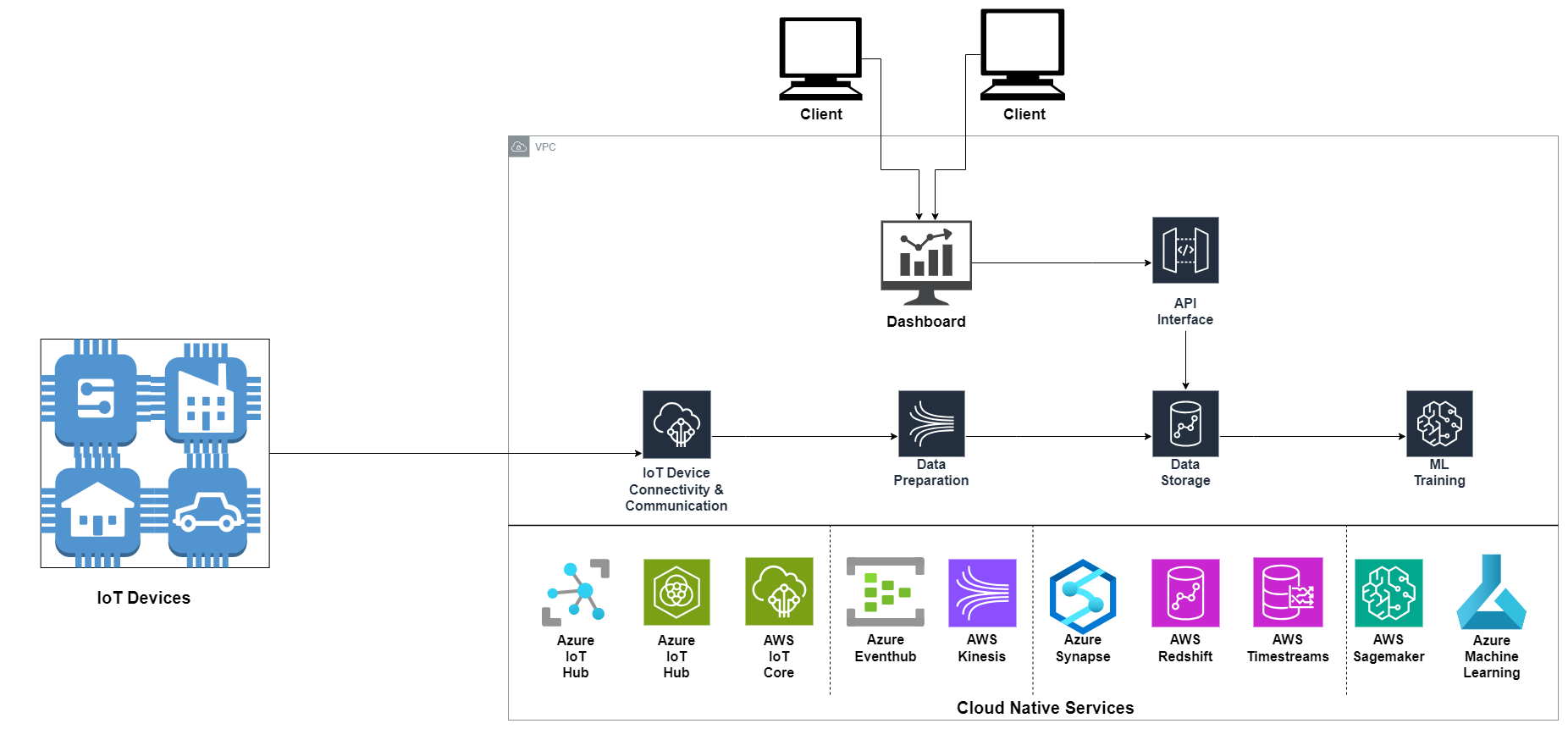,allowExpansion)
Introduction to The Cloud IoT Ecosystem
What you should bear in mind when taking your first steps
A Brief Overview
The emergence of the Internet of Things (IoT) has profoundly changed how we live, work, and interact by connecting gadgets and enabling data-driven decision-making. The new possibilities are almost unlimited, if you pay attention to a few essential aspects. To help you with the first steps towards the IoT cloud, we offer you an overview of the IoT ecosystem. Therefore, we discuss important considerations for building IoT solutions, and introduce a few of the most used IoT cloud services from the leading providers like AWS, Azure and other cloud providers.
Grasping the Fundamentals of IoT Challenges
Understanding the core of IoT is crucial before building a new IoT solution. The IoT landscape is made up of a huge network of linked devices that produce enormous volumes of data that can be used to gain insightful knowledge. Security, scalability, and data management issues are among the challenges brought on by the large number of devices and data points. If you want to set up an efficient and functioning IoT application, you should always keep the following points in mind. Fortunately, Cloud providers usually offer a thorough framework for addressing these issues:
Example of an IoT Architecture on
The Cloud
As professional IoT developers here at Concept Reply, we possess a deep comprehension of the management and operation of IoT ecosystems. We have successfully developed many solutions in this area and will show you below how they are ideally structured. This blueprint encompasses various crucial aspects of an IoT application, each designed to optimize the performance and functionality of the ecosystem. These include data collection, data ingestion, data analytics, data storage, and data visualisation, all of which collectively contribute to the seamless operation of an IoT solution.
Our example offers the flexibility to incorporate additional steps and functionalities or to remove them as needed, in alignment with specific use cases. The framework is also technology-agnostic. While services from AWS and Azure were presented as examples, other platforms like Oracle IoT Intelligent Applications and Thingworx can be used to achieve similar results.

To The Customised Solution With Concept Reply
Our Blueprint can provide valuable guidance into the world of IoT. Do you need more specific support for your project? Our experts will be happy to support you in building a customized IoT solution with the help of suitable cloud services for your company. Thanks to our in-depth expertise and many years of experience, you benefit from efficient solutions that take all important framework conditions into account.